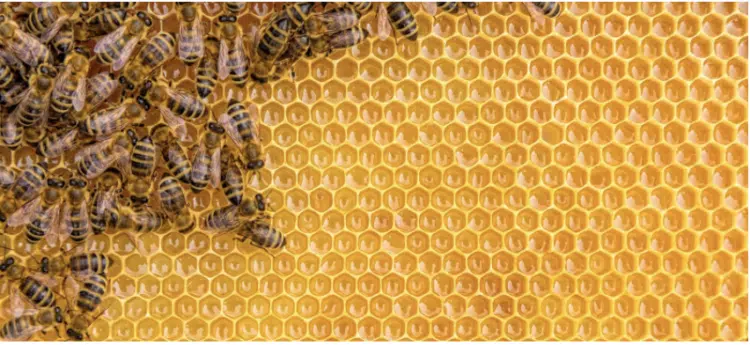HALF PRICE SALE ENDS AT MIDNIGHT – ORDER NOW!
***TODAY ONLY – GET AN EXTRA 10% OFF SALE PRICES WITH CODE FLASH10***
Menu
HALF PRICE SALE ENDS AT MIDNIGHT – ORDER NOW!
***TODAY ONLY – GET AN EXTRA 10% OFF SALE PRICES WITH CODE FLASH10***
 https://www.hopesgrovenurseries.co.uk/wp-content/uploads/2018/01/Screen-Shot-2018-01-24-at-16.59.40-750x345.png
honey bees and honeycomb
https://www.hopesgrovenurseries.co.uk/wp-content/uploads/2018/01/Screen-Shot-2018-01-24-at-16.59.40-750x345.png
honey bees and honeycomb
Honey bees. Small, fuzzy, black and yellow insects that pollinate our flowers. The importance of bees is often lost, but they play a big part in our ecosystem. It’s said that bees are accountable for one out of three bites of the food that we eat. Both domestic and imported fruit and vegetables require the process of pollination; this is something that our friend the honey bee is responsible for. That’s anything from broccoli to citrus fruit, and that’s not even mentioning the pollination of clover and alfalfa – which is what is fed to cattle.
This means not only do honey bees provide pollinated fruit and vegetables, but they also assist in meat product, which creates a connection to the meat and dairy industry also. With honey bees providing so much, it is essential to create bee-friendly environments in gardens during their active season, from March to October. The size of your garden doesn’t matter, even small gardens can make a difference! Here are some effective ways to welcome bees to your garden:

Honey bees are important pollinators of the majority of garden flowers and wildflowers, as they visit them to collect nectar and pollen. The first step to creating a bee-friendly garden is to make sure that your garden is supporting at least a couple of flowers. An ideal method is to make sure that at least two different flowering plants are in bloom from spring to autumn. The best flowers to use are open plants; these are flowers with fewer petals to make it easier for bees to access nectar. For smaller gardens, planting seasonal containers with bee-friendly plants is the way to go.
Avoid using pesticides – these are harmful to honey bees and can even be lethal to them. Pesticides have even been known to damage the survival of whole bee colonies. To keep pests away, we suggest strategic planting. Plants like tomatoes and marigold are great for repelling greenfly and blackfly, while garlic amongst your beautiful roses will prevent aphids.

Providing bees with a shelter is also a great addition to your bee-friendly garden, again size isn’t important! Secluded sheltered areas with shade are the most inviting to bees. Alternatively, old stone walls, perforated wood and upturned or broken plant pots are effective as bee shelters. These act as shelters from those surprising spring showers that can be dangerous for our honeybee friends.
Bees have been around for longer than we realise, with the oldest known bee fossil being 100 million years old. However, there has been a 75% decrease in the number of beehives over the past hundred years. Bees are important to our ecosystem, but with the population of bees in decline, they could be facing extinction in the very near future. Create a bee-friendly garden today! After all, by helping bees, we help our ecosystem.
Many of our customers buy topiary plants (and hedging plants) to grow in containers, one frequently asked question is how large does the pot that I plant them into need to be?
Expert horticultural advice on the merits and pitfalls of planting bare root yews, and how to get the best from them.
Pleached trees are a garden-design favourite, because they provide an instant leafy screen that looks stylish as soon as it’s planted. They offer privacy for you and they help to muffle noise and that’s becoming more important in our busy world. They provide a living screen that’s far more eco-friendly than a stark wooden fence…